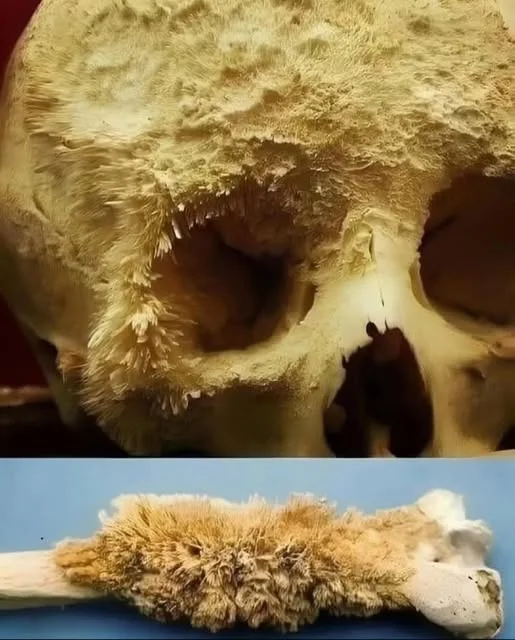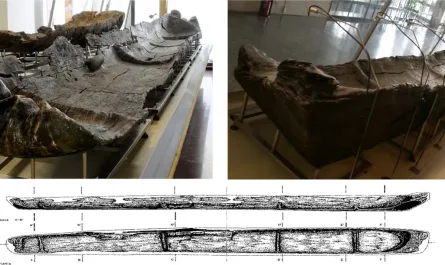Bone cancer is a tumor that appears in or within the bones. Some tumors can develop into malignant tumors, which are then called bone cancers, and some can develop into benign tumors, also known as bone tumors.

Bone cancer is formed due to disruption of bone DNA duplication or abnormal bone cell growth.
Bone cancer can attack any part of the body, but many cases of bone cancer occur in the leg bones, hand bones , hip bones, and pelvic bones.
So far, bone cancer is classified as a rare disease , this can be seen from data showing that bone cancer cases only account for 1% of the total number of cancer cases that have ever existed.
However, be wary of bone cancer, as it is very difficult to detect and treat. Many cases even result in amputation of the affected body part.
Types of Bone Cancer
Bone cancer is classified into five types, each of which has different symptoms and treatment methods.
Here are 5 types of bone cancer that you should know:
1. Osteosarcoma bone cancer
This type of cancer is classified as primary bone cancer, where the malignant tumor first appears in bone tissue.
Osteosarcoma bone cancer more commonly affects children and adolescents between the ages of 9-10 years and occurs more often in males than females.
Osteosarcoma cancer cell growth is more commonly found in long bones such as leg bones and hand bones.
2. Chondrosarcoma bone cancer
Chondrosarcoma bone cancer cases often occur in people aged over 40 years, but it is possible that this type of cancer can occur in people under 20 years of age.
The growth of chondrosarcoma cancer cells often attacks the connective bones or cartilage, such as the hip bones, thigh bones and shoulder or pelvic bones.
3. Kanker tulang Ewing Sarcoma Family of Tumors (ESFT)
More cases of Ewing Sarcoma bone cancer occur in people aged between 10-20 years, but people over 20 years can still get this rare disease.
The emergence of Ewing sarcoma bone cancer is suspected to be due to the presence of elements in primitive nerve tissue. Quoted from Henestdocs.id, “Scientists suspect that Ewing sarcoma originates from elements of primitive nerve tissue (mesenchymal cells) during pregnancy.”
This bone cancer can grow quickly (malignant) or slowly and occurs in the spine, pelvis, leg or thigh bones and arm bones.
4. Fibrosarcoma bone cancer
Fibrosarcoma bone cancer cells can grow rapidly in rare bones, such as the back of the knee. In most cases, this type of tumor is classified as benign, although some are malignant.
Fibrosarcoma bone cancer is very difficult to remove, because it can grow back after being removed or operated on.
5. Chordoma bone cancer
There are not many cases of chordoma bone cancer, and if it does occur, it generally attacks adults over 30 years of age.
Chordoma bone cancer cells grow slowly and are often found in the skull, upper and lower spine.
Bone cancer stages
Bone cancer cases will be divided into 4 stages , namely:
- Stage I. The appearance of cancer cells in the bone and has not yet caused symptoms.
- Stage II . Cancer cells begin to grow outside the bone and may cause symptoms.
- Stage III . Bone cancer has begun to spread to the surrounding bone tissue and causes discomfort.
- Stage IV . Bone cancer is not only in the bone tissue but has spread to other organs in the body.
Bone Cancer Symptoms
Early detection of bone cancer can increase the potential for better healing and minimize the need for amputation.
Here are the characteristics of bone cancer that you should suspect if you experience one or more of the symptoms below.
1. There is pain in the bones
One sign of bone cancer is sudden, difficult-to-treat bone pain. At this stage, many cancer patients are unaware they have bone cancer.
However, not all bone pain is caused by bone cancer. Consult a doctor immediately if you experience bone pain that doesn’t go away.
Pain will appear in the inner part of the bone or bone region affected by cancer, for example: the spine, hip bone, arm bone, leg bone and other parts of the bone.
The pain will be felt more at night and when the bone is used or when touched.
2. Swelling occurs in the painful bone area.
If swelling or lumps appear in the painful bone area, this indicates that cancer cells are starting to grow and cause increasing discomfort.
In addition to swelling or lumps, there will also be redness and inflammation. The discomfort is exacerbated when bone cancer affects the joints, and it can also cause difficulty moving the joints.
3. Experiencing a broken bone
At this stage, the bones will lose their density and strength, making them susceptible to fractures, especially in supporting bones such as the leg bones.
Pain and the appearance of lumps also worsen the condition.
4. Experiencing nervous disorders
Abnormal bone growth caused by malignant tumors in the form of bone cancer will affect the condition of the nerves.
If cancer appears in the spine , it can cause nerves to be compressed, resulting in numbness, tingling, and bone weakness.
Not only that, bone cancer can also spread to other organs of the body such as the lungs, which can cause symptoms of difficulty breathing.
Bone Cancer Treatment
The sooner bone cancer is treated, the greater the chance of recovery. Based on bone cancer cases, at least 70% of patients will recover within five years of receiving medical treatment.
In addition, life expectancy also increases by 5-10 years after receiving appropriate treatment from the time of first diagnosis.
The administration of bone cancer drugs to eliminate or remove bone cancer depends on the location, stage and health condition of the patient.
In general, bone cancer treatment can be done as follows:
1. Operation
Surgical removal of the bone in the area affected by cancer can be performed if the cancer has not spread outside the bone.
This surgical procedure will replace the cancer-affected bone with an artificial bone made of metal while leaving the muscles, blood vessels and nerves intact.
2. Amputation
Amputation is performed when bone cancer has spread outside the bone. This involves cutting or removing parts of the body, including muscles, blood vessels and nerves.
3. Chemotherapy
Chemotherapy is carried out after bone cancer patients undergo surgery, which is an action that functions to restore the function of the removed body organ.
Chemotherapy can be done by injecting anticancer drugs into the blood vessels.
4. Radiation or radiotherapy
Bone cancer treatment procedures using radiation therapy using X-rays are carried out before the patient undergoes surgery with the aim of shrinking cancer cells.
Radiotherapy using high radiation rays will be carried out 5 times a week, each session will take only a few minutes.
5. Cryosurgery
Action to treat bone cancer using cryosurgery techniques without the need for surgery.
This procedure uses liquid nitrogen to freeze cancer cells and kill their growth. This procedure takes a considerable amount of time.





